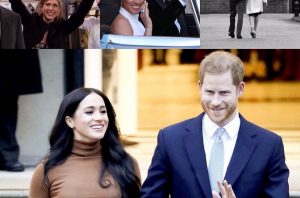
On November 22, 1963—53 years ago—President Kennedy was assassinated in Dallas, Texas. The following excerpts from Mrs. Kennedy and Me and Five Presidents reveal what really happened from someone who was there: Jackie’s secret service agent Clint Hill.
Sunday, November 24 was the day the president’s body would be taken to the U.S. Capitol to lie in state. That morning, I got an urgent message to return to the mansion. Mrs. Kennedy and her brother-in-law, Robert Kennedy, wanted to view the president’s body one final time.
I raced to the hallway outside the East Room, where General Godfrey McHugh was waiting with Mrs. Kennedy and the attorney general. After requesting the honor guard to turn around and move back from the casket, General McHugh carefully folded back the flag, and together we raised the lid of the casket. When I saw President Kennedy lying there, confined in that narrow casket, with his eyes closed so peacefully just like he was sleeping, it was all I could do to keep from breaking down. McHugh and I slowly moved back from the casket as Mrs. Kennedy and the president’s brother walked over to view the man they had so loved.
Weeping, Mrs. Kennedy turned to me, and asked if I would bring her a pair of scissors. I quickly found some in the drawer of the usher’s office across the hall, and after placing them in her hands, I turned away to give her some privacy. With my back to the casket, I heard the sound of the scissors, beneath the painful cries, as she clipped a few locks of her husband’s hair.
Robert Kennedy gently closed the lid of the casket, grabbed Mrs. Kennedy’s hand, and together they walked out of the East Room. General McHugh and I checked the casket to make sure it was securely closed, and out of habit, I looked at my watch to take note of the time—12:46. I had seen President Kennedy for the last time; the casket would never be opened again.
President Kennedy’s casket was placed on an artillery carriage and led by a team of gray horses. Directly behind the caisson, Mrs. Kennedy rode with the children, the attorney general and President and Mrs. Johnson.
We headed out the Northeast Gate of the White House, the procession moving slowly, at the pace of the marching horses, and as we turned onto Pennsylvania Avenue, thousands of people stood—ten and fifteen deep—on both sides of the wide street. From my position in the front passenger seat, I had a clear view of the tearful, anguished faces grieving the president they had loved. It was unlike any other motorcade I had ever been in before. There were no cheers or hollers, no clapping hands or waving banners; three hundred thousand people, dead silent. The only sounds you could hear—sounds that would remain forever in my memory—were the clip-clop of the horses’ hooves and the repetitive cadence of the military corps’ muffled drums, all the way to the Capitol.
For 22 hours, President Kennedy’s flag-draped casket stayed in the Rotunda. A tidal wave of people had come, queuing for hours on into the night, just to have a few seconds to pay their respects to their beloved president. By the time the doors finally closed on Monday morning, a quarter of a million people had filed past the casket.
Mrs. Kennedy was heavily involved in the funeral plans. One of the things she was insisting was to walk behind the caisson from the White House to St. Matthews, where the funeral Mass would take place, and then on to Arlington National Cemetery. With heads of state from countries all over the world planning to participate, we knew that if Mrs. Kennedy walked, they too would feel compelled to walk. To have every major world leader walking slowly through the streets of Washington DC was going to be a security nightmare. I tried to talk Mrs. Kennedy out of it, and ultimately, she agreed to compromise by walking just one segment of the procession—from the White House to St. Matthews. Agent Landis and I would be right alongside her, but I knew it would be the longest mile I’d ever walked.
The lighting of the Eternal Flame
It was time to light the eternal flame. From the moment Mrs. Kennedy started planning this heartrending day, she had the idea of an eternal flame—just like the one at the Tomb of the Unknown Soldier in Paris. She overcame the objections and negative attitudes of everyone who said it was too complicated a job to be done in time. I was proud of her fortitude and positive attitude, which enabled her to do it. The eternal flame was her triumph.
She was handed a lighted torch and bent forward to ignite the flame. The fire danced as she passed the lighted torch to Bobby Kennedy who in turn handed it to Ted, each symbolically igniting the flame. The United States flag that had draped the casket was folded and presented to Mrs. Kennedy. Taps, the final ending to a military funeral, were played.
The bugler, standing off to the side, started playing and the sound rolled through the hills surrounding Arlington National Cemetery. He was feeling the pressure of performing before thousands in person and millions on TV. He flubbed a note and recovered quickly. I felt sorry for him knowing he would never forget it, and the world had it recorded for posterity. Mrs. Kennedy thanked the military commander and we entered the waiting limousine and drove back to the White House.
The day was far from over. First there was a small reception in the upstairs yellow Oval Room, in the residence quarters, for a few special people: Charles De Gaulle, Prince Philip, Emperor Haile Selassie, Ireland’s President Éamon de Valera. After offering her sincere thanks to these men, she went to the Red Room, where a larger reception was held for the scores of other foreign dignitaries. This involved a lot of people and I was concerned about her being able to stand the strain. If she felt it, she didn’t show it.
I thought this would certainly be the end for the day and she would go to the second floor living quarters and retire for the night. Instead, as the reception was winding down, she motioned to me.
“Yes Mrs. Kennedy, what can I do for you?
“I may want to go back to Arlington later,” she whispered. “I’ll call and let you know
I was exhausted, and she hadn’t slept any more than I had. How she could keep this up I didn’t know. We needed to make arrangements with the superintendent’s office at Arlington. This was to be completely private, and kept absolutely confidential.
When Mrs. Kennedy finally went to the second floor, I went to the Map Room and more or less collapsed in my chair. Shortly before midnight, she called.
“Yes Mrs. Kennedy,” I answered.
“Mr. Hill, Bobby and I want to go to Arlington now. We want to see the flame.”
“Certainly Mrs. Kennedy. I’ll get the car.
I called Sgt. Watkins and he brought the car around. We took Mrs. Kennedy and Bobby to the cemetery, as Agent Paul Landis followed in another car. As we drove across Memorial Bridge, there straight ahead of us flickering on the hillside was the eternal flame. It was a moving, very emotional sight.
We drove up to the site, and walked to the grave. Mrs. Kennedy had brought a small bouquet of flowers, and she placed them on the fresh earth. Mrs. Kennedy and Bobby knelt and prayed, then stood and looked back across the Potomac at the lights of the memorials. We all got back in the car, and returned to the White House.
No press, no public, complete privacy. Just the way Mrs. Kennedy wanted it.









